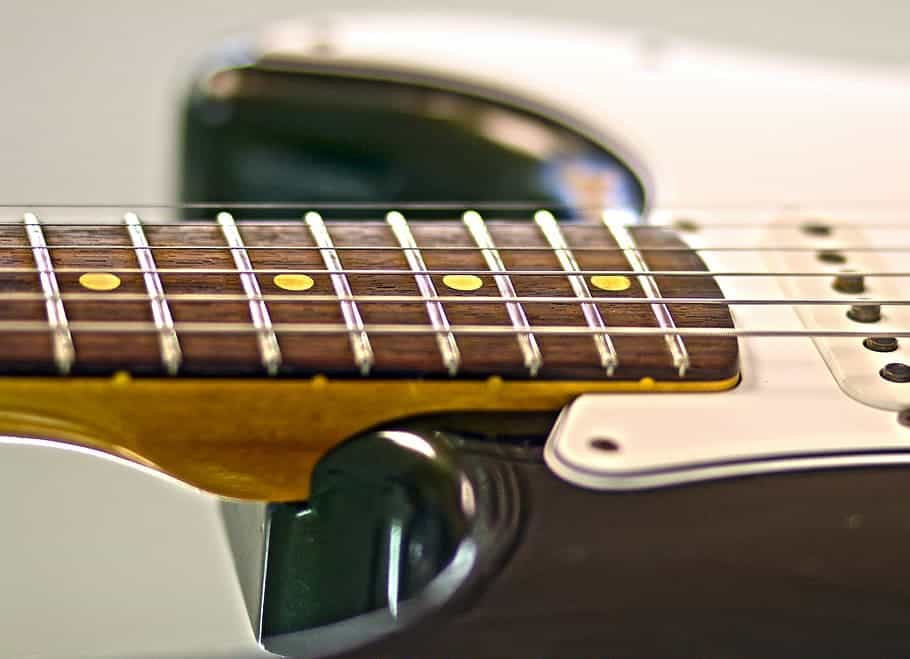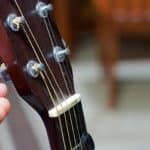The guitar is an amazing instrument and its versatility is a big part of its appeal.
Despite its somewhat rigid makeup, it is surprisingly flexible and one of the most common ways of experimenting with a guitar is by changing the tuning.
However, as is the case with any experiment, there is a chance of things going awry and a common doubt is if changing the tuning will affect the setup of a guitar.
Allow me to clear this doubt:
You won’t need to re-setup a guitar if after changing its tuning you don’t notice any problem with its playability or sound. This is probably the case when the shift in string tension is not that big. However, if you notice fret buzz, intonation problems, or uncomfortable string action, a setup is due.
How could changing the tuning of your guitar affect its setup?
Setting up a guitar properly plays a major role in how conducive the instrument is to learning and playing.
It can make all the difference between a mediocre performance and one that warrants a standing ovation.
However, anyone who has played guitars for any reasonable amount of time will know that a lot of things can affect the guitar’s setup and one of them is string tension.
The strings exert a substantial amount of force between the bridge and the nut and this force tries to bend the neck forwards.
This force is counteracted and balanced by the structural strength of the combination of the wood and metal used for the neck and the truss rod respectively.
Setup involves balancing this force in such a way that the action is just right while ensuring that the intonation is perfect.
Guitar setup is a delicate dance and it does not take a lot to upset this balance.
So, will changing tuning affect that? It depends on the tuning.
If it only involves minute changes like half a step-down or the very popular drop D tuning then in most cases you won’t have to set the guitar up again.
However, this isn’t always the case. It all depends on the exact guitar you have and the type of setup work previously done on it.
If you are someone who likes to play with a very low action then even a small change in tuning can lead to fret buzz as the tolerances are very low.
Similarly, a guitar that has been recently set up or set up well will offer a bit more room for tuning changes than one that was set up a long time ago or one that was only set up in a passable manner.
How do you know if your guitar needs a re-setup?
It is all in how the way the guitar feels.
A guitar that has been set up properly should feel like an extension of your hands.
Ideally, this is how it should feel after the tuning change as well. If it does not then you will need to set the guitar up again.
However, before jumping to any conclusions and to ensure that you are aware of the remedial steps you might have to take, it is important to spend some time investigating exactly how the setup of the guitar was upset in the first place.
To make sure that your assessment is on point, wait for at least half an hour if not more so that the guitar can settle and won’t undergo further changes after you have checked it.
Here are a few things to check to know if your guitar needs a re-setup:
- Neck relief: All guitar necks that have been set up properly, at least in most cases, will have a slight concave bow. There will be a slight dip in the middle. Look down the neck from the nut to see If after the tuning change the neck still has this relief. If it is straight or if it is convex with the middle of the fretboard bulging out then the guitar will definitely need to be set up again.
- Buzzing frets: Play all the strings in the open position. They should sound clear and sustain naturally for a decent amount of time. If any of them sound muted then the guitar will need to be set up again. Similarly. Play every single note up and down the fretboard on all strings and keep an ear out for any notes that sound dead, muted, or muffled. You can use a capo to make this easier. Again, if there is fret buzz then the guitar will need some setup work.
- Intonation problems: After the guitar has been tuned, press down each string at the 12th fret and use a tuner to check if the guitar is still in tune. It should not be sharper or flatter. The same applies to each note as well. If it is off by a very small amount then it is okay but anything approaching half a step or even a quarter step is too much.
- Uncomfortable string action: If you suddenly find the guitar difficult to play overall with the notes sounding clear only after a lot of force is applied then the action may have become too high. This happens when there is too much clearance between the strings and the fretboard and can be fixed with a few adjustments.
Can this situation damage the guitar?
The biggest concern about any change is if any of the ill effects will be permanent.
Thankfully, a tuning change won’t lead to such a situation.
The worst-case scenario would be to have a string or two snap.
However, even this is a very rare occurrence. It would take something really extreme that would actually do some permanent damage to the guitar.
Despite this, if you spot something off about the guitar after the tuning change, set it up again.
Is it hard to fix the setup by yourself?
One of the lesser explored joys of owning a guitar is tinkering with it to make it play and sound better.
It is quite easy to find plenty of useful and helpful tutorials online that will tell you precisely how to set up a guitar.
There are a couple of caveats though.
Setting up a guitar well requires a few specialized tools like hex wrenches of different sizes, string action gauge, nut files, fret leveler, fret files, and the list goes on.
You won’t need all these tools at once and it will all come down to exactly what needs to be done.
Then there is the skill and patience required.
Some tasks like adjusting the intonation are easy but time-consuming while others like adjusting the truss rod are more about skill and take practice to get right.
Adjusting one aspect of the guitar can lead to something else going out of order.
Understanding how everything is connected is key to getting it right.
If you are someone who likes doing stuff by yourself and are willing to put in the time and effort then go for it by all means.
On the other hand, if you are someone who needs help with things like changing strings and carrying out other minor upkeep on the guitar then it is best to take your guitar to a professional.
How much does it cost to have your guitar set up by an expert?
The cost for guitar setup work can vary and it depends on the following factors
- The guitar luthier: Someone more renowned, experienced, and known for doing a good job will generally charge more
- The amount of work required: This is pretty simple. If a lot of work is required then it will cost more
- Replacement Parts: If any parts such as the nut, strings, nuts, etc., need to be replaced then that will drive the price up higher
- Guitar type: Fixed bridge guitars are easier to set up than guitars with a floating bridge such as a Floyd Rose. Similarly, bolt-on necks require less work than set-necks.
Generally, it can cost $50 for basic setup work. This price can go up or down depending on the factors mentioned above.
Conclusion
To sum it up, do you really need a setup work on a guitar after a tuning change?
It depends on 2 things.
If you are simply experimenting and this tuning won’t be permanent and the guitar is playable then you do not need to worry about setting it up again.
Similarly, the guitar won’t need any work If the new tuning is to stay but nothing major seems to be out of order.
It is only when the guitar does not sound right or doesn’t play quite right that it needs to be set up all over again.

Hello there, my name is Ramiro and I’ve been playing guitar for almost 20 years. I’m obsessed with everything gear-related and I thought it might be worth sharing it. From guitars, pedals, amps, and synths to studio gear and production tips, I hope you find what I post here useful, and I’ll try my best to keep it entertaining also.





